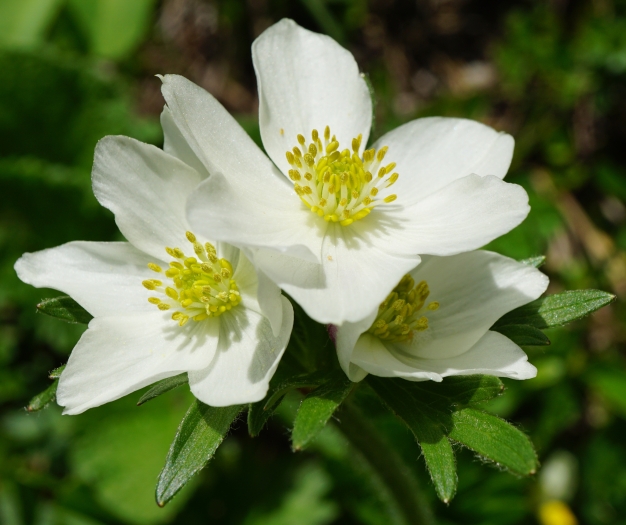Narcissus Anemone
(Anemonastrum narcissiflorum)
Narcissus Anemone (Anemonastrum narcissiflorum)
/
/

Patrick Hacker
CC BY 4.0
Image By:
Patrick Hacker
Recorded By:
Copyright:
CC BY 4.0
Copyright Notice:
Photo by: Patrick Hacker | License Type: CC BY 4.0 | License URL: http://creativecommons.org/licenses/by/4.0/ | Rights Holder: Patrick Hacker | Publisher: iNaturalist | Date Created: 2021-06-15T13:13:52-07:00 |
























Estimated Native Range
Summary
Anemonastrum narcissiflorum, commonly known as Narcissus Anemone or Narcissus-flowered Anemone, is a perennial herb that thrives in alpine and subalpine zones, including the Northern Hemisphere’s Arctic regions, mountain meadows, and along riverbanks. It typically grows at a moderate rate to a height of 1.5-2 feet (0.46-0.6 meters) and features clumps of deeply divided, dark green leaves. The plant is renowned for its white, showy flowers that resemble daffodils, blooming in the summer and attracting pollinators. The flowers’ beauty and the plant’s ability to thrive in cooler climates make it a desirable addition to rock gardens, alpine collections, and as a border plant in garden settings.
Narcissus Anemone is valued for its ornamental flowers and its adaptability to a range of mountainous habitats. It is relatively low-maintenance, requiring medium amounts of water and thriving in well-drained loam or clay soils. While it prefers full sun or part shade, it can tolerate a variety of light conditions, making it versatile for gardeners. It is not commonly afflicted by diseases, but gardeners should be mindful of potential root rot in overly wet conditions. This species is not known for aggressive roots or invasiveness, making it a safe choice for cultivation near other plants.CC BY-SA 4.0
Narcissus Anemone is valued for its ornamental flowers and its adaptability to a range of mountainous habitats. It is relatively low-maintenance, requiring medium amounts of water and thriving in well-drained loam or clay soils. While it prefers full sun or part shade, it can tolerate a variety of light conditions, making it versatile for gardeners. It is not commonly afflicted by diseases, but gardeners should be mindful of potential root rot in overly wet conditions. This species is not known for aggressive roots or invasiveness, making it a safe choice for cultivation near other plants.CC BY-SA 4.0
Plant Description
- Plant Type: Herb
- Height: 1.5-2 feet
- Width: 0.5-1 feet
- Growth Rate: Moderate
- Flower Color: White
- Flowering Season: Summer
- Leaf Retention: Deciduous
Growth Requirements
- Sun: Full Sun, Part Shade
- Water: Medium
- Drainage: Medium
Common Uses
Border Plant, Low Maintenance
Natural Habitat
Alpine and subalpine zones, mountain meadows, and riverbanks
Other Names
Common Names: Narcissus-flowered Anemone
Scientific Names: , Anemonastrum narcissiflorum, Anemone narcissiflora subsp. europaea, Anemone narcissiflora subsp. typica, Anemone narcissiflora var. elata, Anemone narcissiflora var. linneana, Anemone narcissiflora var. major, Anemone narcissiflora var. minor, Anemone narcissiflora var. parviflora, Anemone umbellata,
GBIF Accepted Name: